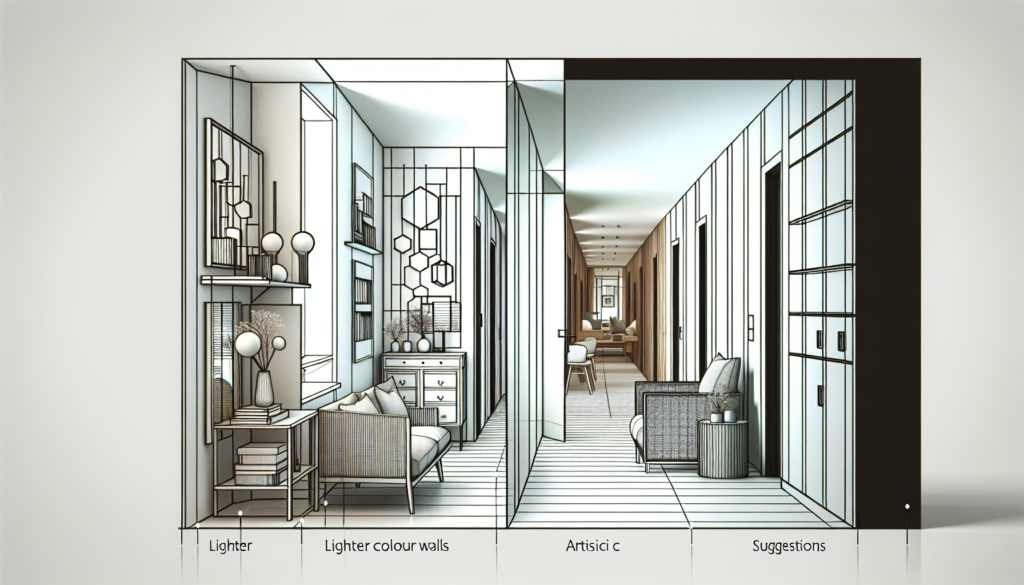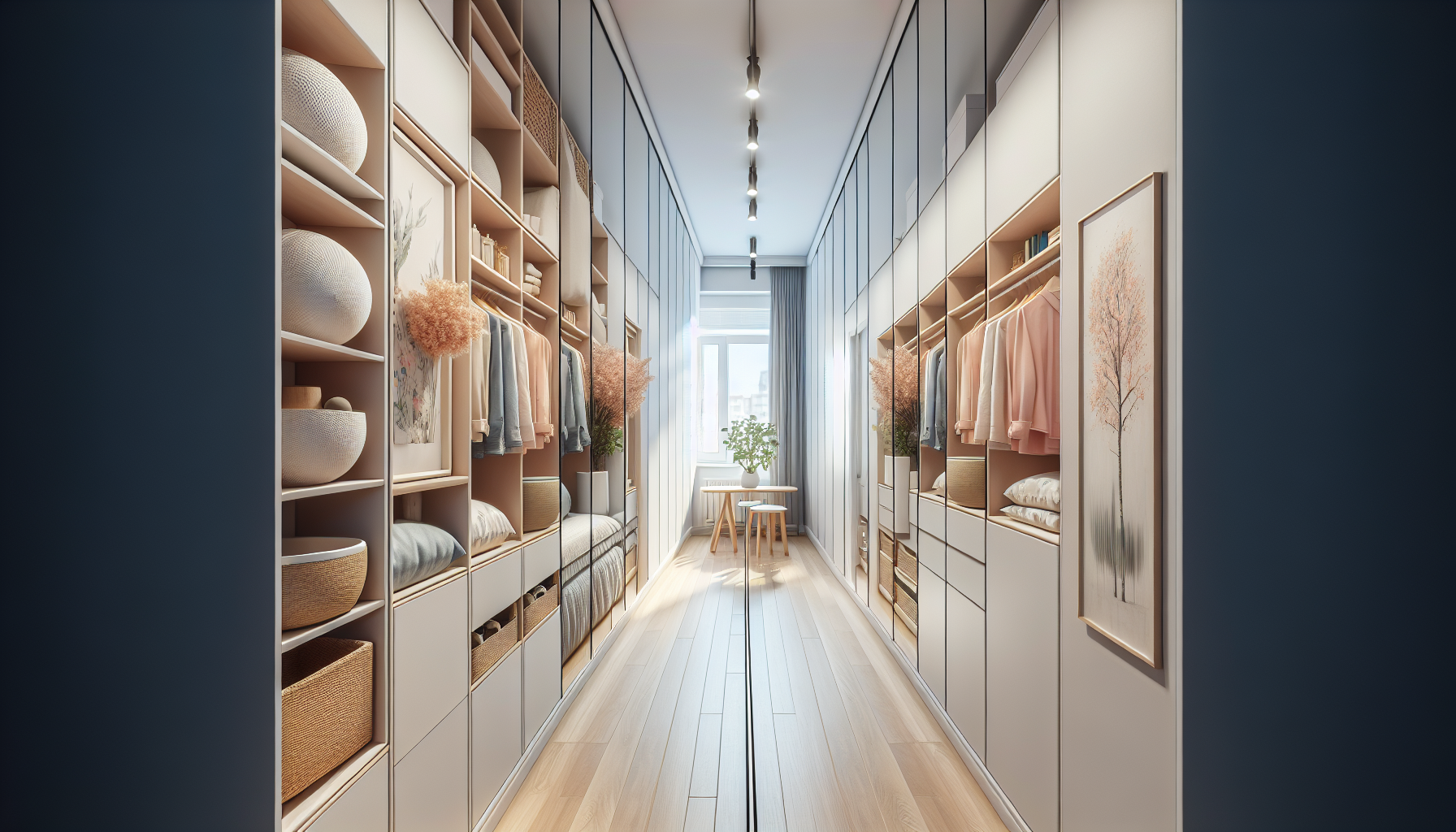
Looking to make the most of your long, narrow space? When it comes to designing a home or residential interior, it can be a challenge to create a balanced and functional layout. Whether you’re dealing with a hallway, a living room, or a bedroom, there are a few key tips that can help you optimize your space. From strategic furniture placement to utilizing vertical storage solutions, we’ve got you covered. So, if you’re ready to transform your long, narrow space into a stylish and practical area, keep reading for some expert advice.
Choose the Right Furniture
When it comes to designing a long, narrow space, selecting the right furniture is crucial to creating a balanced and functional layout. Before you go out shopping, start by measuring the space you have available. This will help you determine the right size and proportions for your furniture pieces. Make sure to take into account any doorways or windows that may affect how you arrange your furniture.
One tip for utilizing a long, narrow space is to Use multipurpose furniture. Look for pieces that can serve more than one function, such as a sofa with a pull-out bed or a coffee table with built-in storage. This will help maximize the functionality of your space while minimizing clutter.
Another important consideration when choosing furniture for a long, narrow room is to avoid bulky pieces. Opt for furniture with sleek and streamlined designs that won’t overwhelm the space. Bulky furniture can make a room feel crowded and obstruct the flow of traffic.
Lastly, think about the flow of the room. Arrange your furniture in a way that creates clear pathways and allows for easy movement. Consider placing larger pieces against the walls to open up the center of the room. This will help create a more spacious and inviting atmosphere.
Utilize Vertical Space
When working with a long, narrow space, it’s important to utilize vertical space to make the room feel more expansive and well-balanced. Here are some tips to help you make the most of the vertical area in your room:
Install shelves or bookcases along the walls. This not only provides additional storage but also draws the eye upward, making the room feel taller and more spacious.
Hang artwork or mirrors on the walls. This not only adds visual interest but also reflects light and creates the illusion of a larger space. Consider placing mirrors across from windows to maximize the amount of natural light entering the room.
Use tall plants or trees to add height and greenery to the space. These can be placed on the floor or in decorative pots on shelves. Not only do they add visual appeal, but they also bring a sense of freshness and life to the room.
Choose a vertical color scheme when painting or decorating the walls. This involves selecting colors that have a vertical orientation, such as stripes or vertical patterns. This helps elongate the walls and create the illusion of a higher ceiling.

Create Zones
Creating zones in a long, narrow space is essential to break up the room and define different areas of functionality. Here are some tips for creating zones in your space:
Divide the space with rugs. Use different rugs to delineate different areas, such as a seating area, a workspace, or a dining area. This not only adds visual interest but also helps define each zone.
Consider using room dividers or screens to separate different areas of the room. This can be particularly useful if you want to create a sense of privacy or if you have multiple functions within the space.
Opt for open shelving instead of closed cabinets. Open shelves help create a sense of openness and allow you to display decorative items or store frequently used items in an organized manner.
Arrange your furniture in a way that defines each area of the room. For example, position your sofa and coffee table to create a cozy seating area, or place a desk and chair in a corner to create a dedicated workspace. This not only adds functionality but also helps visually define each zone.
Maximize Natural Light
Maximizing natural light is essential when designing a long, narrow space. It not only makes the room feel brighter and more inviting but also helps create a sense of openness and balance. Here are some tips for maximizing natural light in your space:
Choose light-colored window treatments that allow as much light as possible to pass through. Sheer curtains or blinds can be a great option as they filter light while maintaining privacy.
Remove or minimize obstructions that may block or reduce the amount of natural light entering the room. This includes items like heavy curtains, furniture, or decor items that obstruct windows or create shadows.
Use mirrors strategically to reflect light and create the illusion of a larger space. Place mirrors across from windows to maximize the amount of light they reflect. Mirrored furniture pieces can also help bounce light around the room.
Paint the walls in light tones to make the most of natural light. Light colors reflect light, making the room feel brighter and more spacious. Consider using shades of white, beige, or pastel colors for a light and airy feel.
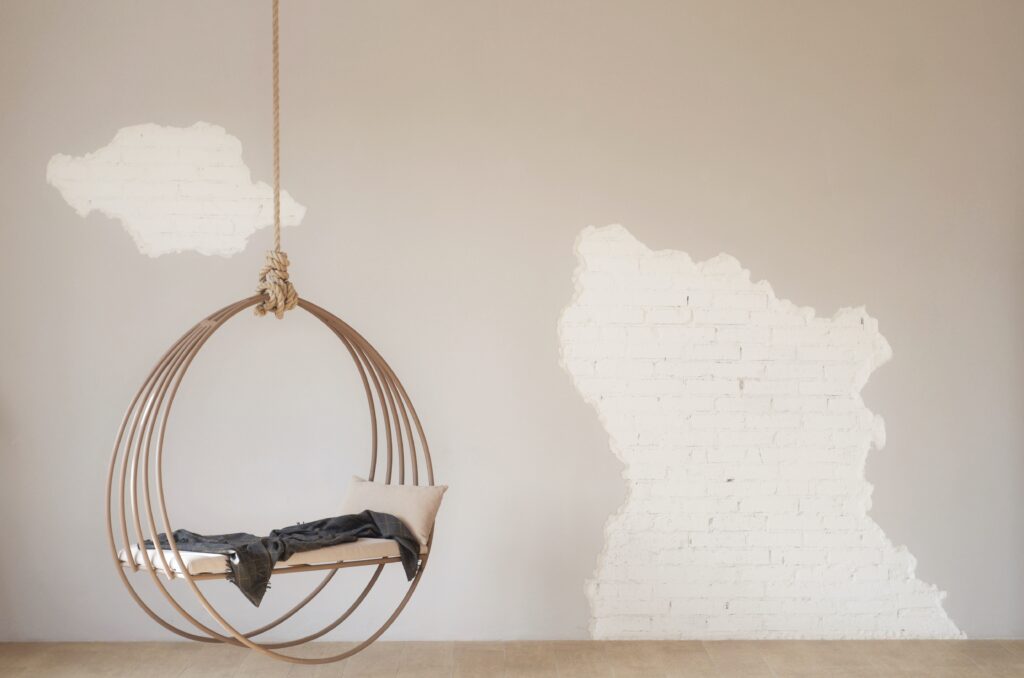
Enhance Lighting
In addition to natural light, it’s important to have adequate artificial lighting in a long, narrow space. This helps create ambiance, highlight specific areas, and ensure that the room is well-lit. Here are some tips to enhance the lighting in your space:
Layer different types of lighting to create a well-balanced and versatile lighting scheme. This can include ambient lighting (such as overhead lights), task lighting (like desk lamps or under-cabinet lighting), and accent lighting (such as spotlights or wall sconces).
Use lamps or sconces to provide focused and adjustable lighting. These can be placed in specific areas to provide task lighting or to create a cozy ambiance.
Consider installing recessed or track lighting to provide general illumination throughout the room. These types of lighting fixtures are discreet and can be directed to highlight specific areas or objects.
If you want to make a statement, consider using pendant lights. These hanging fixtures can add a touch of elegance and drama to your space while providing ample lighting.
Use Mirrors Strategically
Mirrors are a powerful tool when it comes to designing a long, narrow space. They not only create the illusion of a larger room but also reflect light and add visual interest. Here are some strategic ways to incorporate mirrors into your design:
Place mirrors across from windows to maximize the amount of natural light they reflect. This helps brighten up the space and creates a sense of openness.
Hang mirrors on adjoining walls to visually expand the room. This works especially well in long, narrow spaces as it makes the room feel wider.
Opt for larger mirrors to create a more dramatic effect. A large mirror can act as a focal point and make a statement in your design.
Consider using mirrored furniture pieces such as dressers or side tables. These not only add functionality but also create the illusion of a more spacious room.
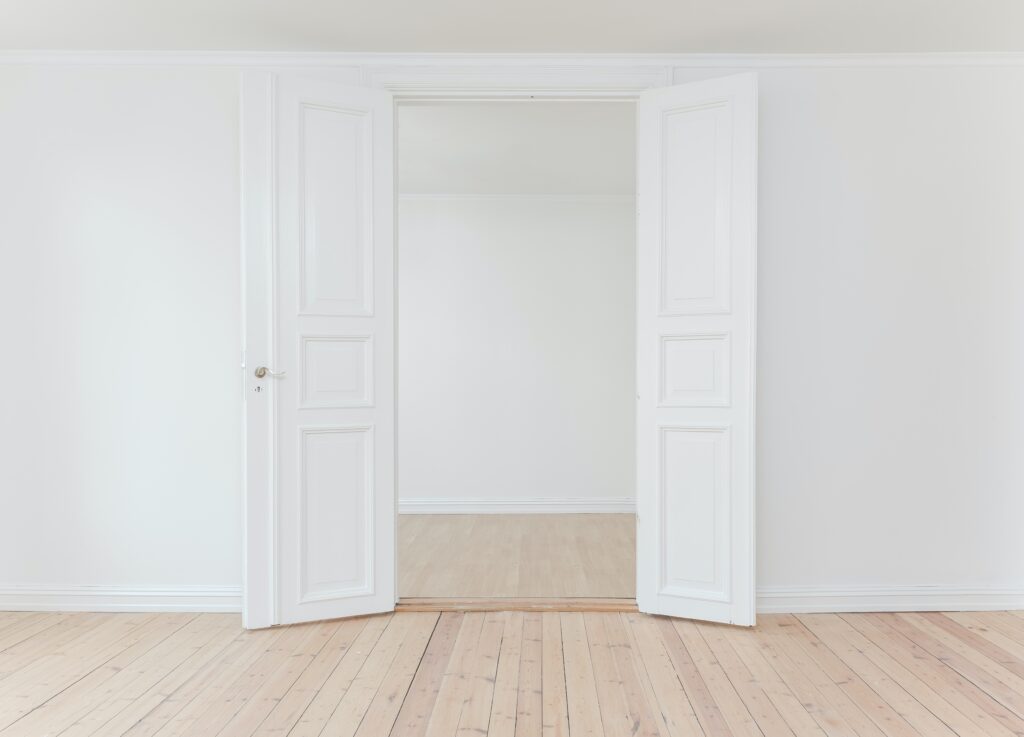
Play with Colors
Color is an essential element in any design, and when it comes to a long, narrow space, it can make a significant impact. Here are some tips for using color to balance your room:
Create an accent wall by painting one wall a different color or using wallpaper. This adds visual interest and can help break up the length of the room.
Choose a cohesive color palette for your space. This involves selecting colors that work well together and harmonize with the overall design. Consider using lighter colors that visually expand the space and create a sense of airiness.
Experiment with bold color combinations to add personality and character to your room. Don’t be afraid to mix and match different hues and shades to create a vibrant and dynamic atmosphere.
Use lighter colors on the walls to visually expand the space. Lighter shades reflect more light and make the room feel more spacious. Consider using whites, pastels, or neutral tones for a fresh and airy feel.
Consider Flooring Options
The right flooring can have a significant impact on the overall look and feel of a long, narrow space. Here are some considerations when selecting flooring for your room:
Opt for light-colored flooring to brighten up the space. Lighter shades, such as light wood or pale tiles, not only reflect more light but also make the room feel more open and airy.
Choose wide-plank or diagonal flooring to visually expand the room. Wide planks create a sense of width, while diagonal flooring creates a sense of movement.
Use rugs strategically to add texture and warmth to the space. Place rugs in different areas to create visual interest and help define each zone within the room.
Consider using hard surfaces like tile or hardwood for easy maintenance. These types of flooring are not only durable but also provide a sleek and clean look to the room.
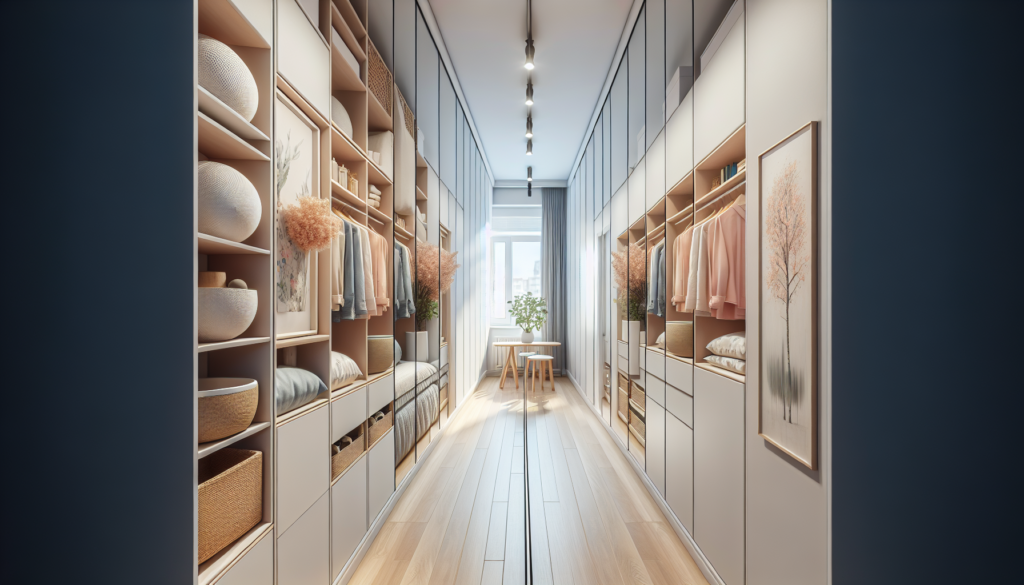
Think About Scale and Proportion
When designing a long, narrow space, considering the scale and proportion of your furniture and decor items is key to achieving a balanced and harmonious look. Here are some tips to keep in mind:
Use oversized artwork or statement furniture to create a focal point in the room. This can help draw the eye and add visual interest to the space.
Avoid overwhelming the room with tiny decor items. Instead, choose a few larger pieces that make a statement and have a greater impact.
Balance large and small elements in the room. Mix larger furniture pieces with smaller ones to create a sense of visual harmony and variety.
Consider the height of the ceiling when selecting furniture and decor items. Taller ceilings can accommodate taller furniture, while lower ceilings may require lower profile pieces to maintain balance.
Visual Tricks and Illusions
There are several visual tricks and illusions you can use to create a more balanced and visually appealing long, narrow space. Here are some ideas to try:
Hang curtains higher than the window to create the illusion of taller walls and a higher ceiling. This helps make the room feel more spacious and open.
Use striped patterns, either on the walls or in your decor, to elongate the room visually. Vertical stripes can make the walls appear taller, while horizontal stripes can make the room feel wider.
Create depth with layered lighting. By combining different types of lighting fixtures at various heights, you can create a sense of depth and dimension within the space.
Hang artwork at eye level to create a more cohesive and balanced look. This helps draw the eye and adds visual interest to the walls.
In conclusion, designing a long, narrow space requires careful consideration and strategic planning. By following these tips, you can create a well-balanced and visually appealing room that maximizes both functionality and style. From choosing the right furniture and utilizing vertical space to creating zones and playing with lighting and color, there are many ways to transform your long, narrow space into a beautiful and inviting environment. So go ahead, get creative, and make the most of your unique space!
